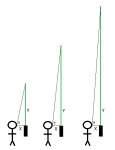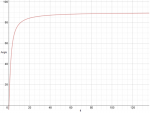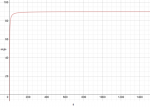grainde
0
- Joined
- Jan 29, 2012
- Messages
- 3,164
- Points
- 113
Could it actually be your viewing perspective relative to the beam. The closer you are to the source the shorter the distance to where your line of sight is aligned with the beam. ie you begin to look along the beam and so as the back scatter all comes back at essentially the same angle, at that point, the beam seems to terminate and slightly more brightly. As it heads out in to the atmosphere as well, there will be less particles and less scatter so this would account for the fact that the perceived brightness doesnt increase too greatly (theres also scatter of the scattered light returning, that would reduce its intensity too).
Blord's sky scraper photo also demonstrates barrel distortion created by a lens
Blord's sky scraper photo also demonstrates barrel distortion created by a lens










